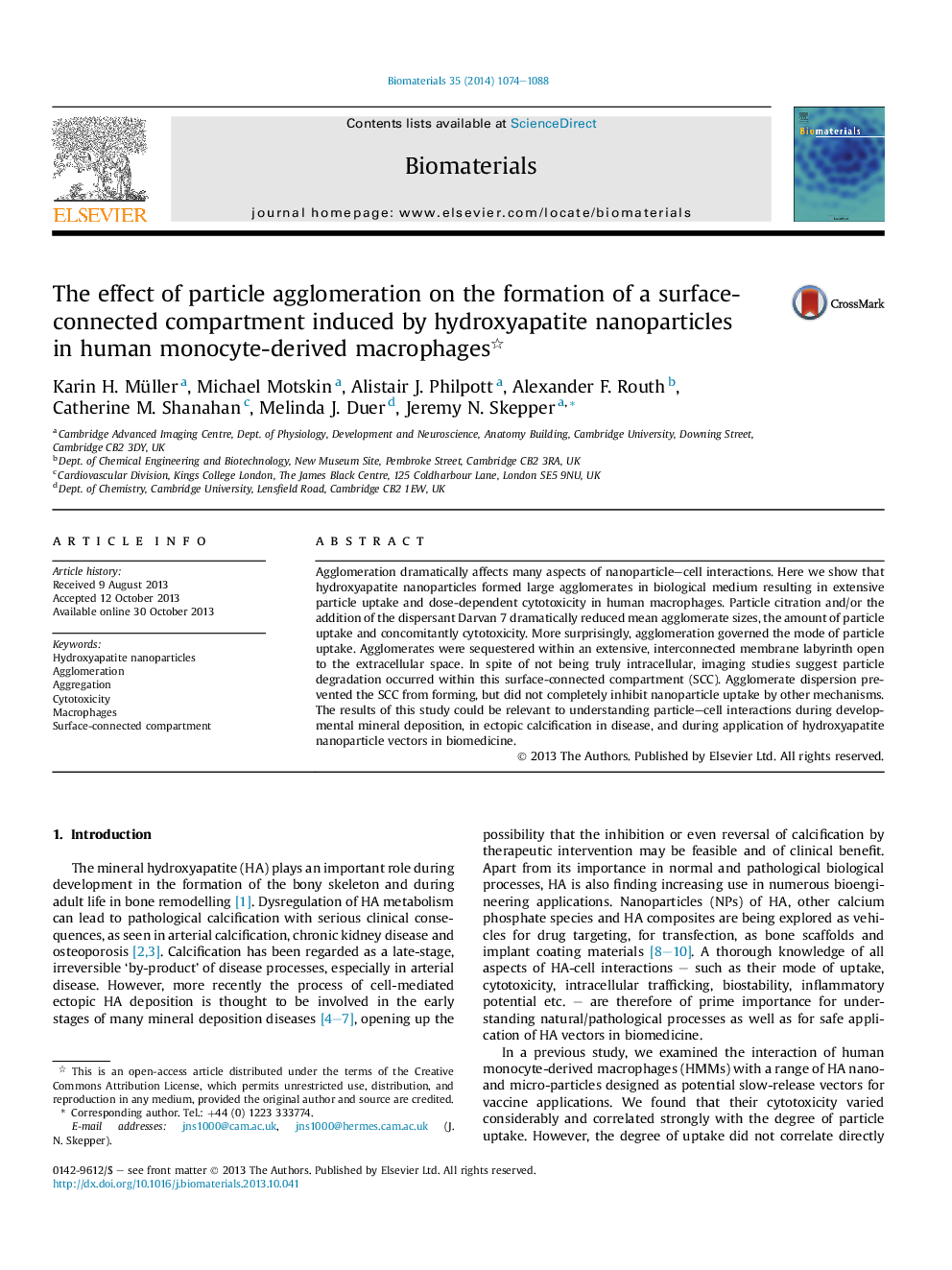| Article ID | Journal | Published Year | Pages | File Type |
|---|---|---|---|---|
| 10227701 | Biomaterials | 2014 | 15 Pages |
Abstract
Agglomeration dramatically affects many aspects of nanoparticle-cell interactions. Here we show that hydroxyapatite nanoparticles formed large agglomerates in biological medium resulting in extensive particle uptake and dose-dependent cytotoxicity in human macrophages. Particle citration and/or the addition of the dispersant Darvan 7 dramatically reduced mean agglomerate sizes, the amount of particle uptake and concomitantly cytotoxicity. More surprisingly, agglomeration governed the mode of particle uptake. Agglomerates were sequestered within an extensive, interconnected membrane labyrinth open to the extracellular space. In spite of not being truly intracellular, imaging studies suggest particle degradation occurred within this surface-connected compartment (SCC). Agglomerate dispersion prevented the SCC from forming, but did not completely inhibit nanoparticle uptake by other mechanisms. The results of this study could be relevant to understanding particle-cell interactions during developmental mineral deposition, in ectopic calcification in disease, and during application of hydroxyapatite nanoparticle vectors in biomedicine.
Related Topics
Physical Sciences and Engineering
Chemical Engineering
Bioengineering
Authors
Karin H. Müller, Michael Motskin, Alistair J. Philpott, Alexander F. Routh, Catherine M. Shanahan, Melinda J. Duer, Jeremy N. Skepper,
